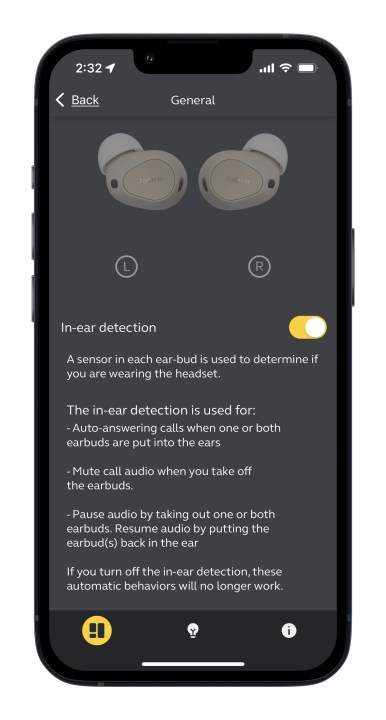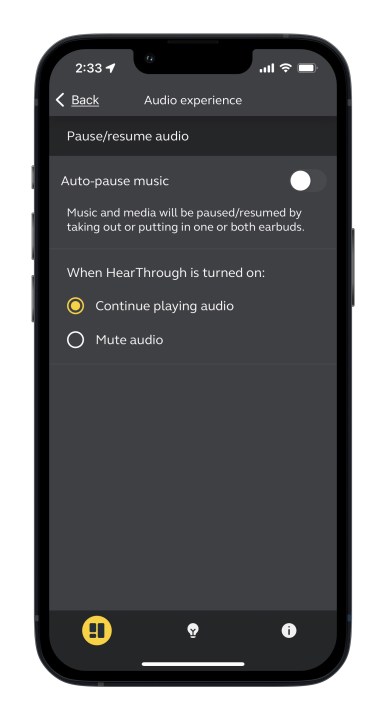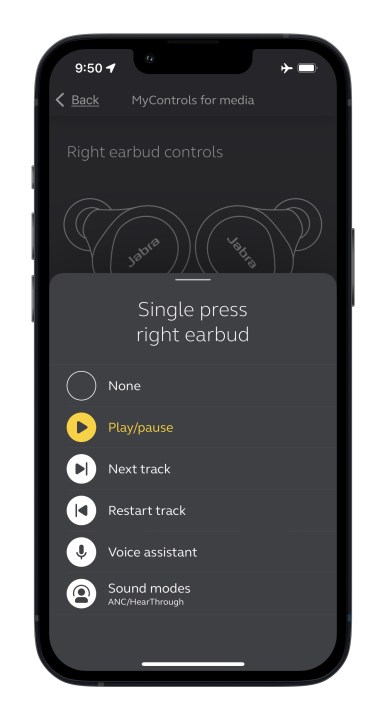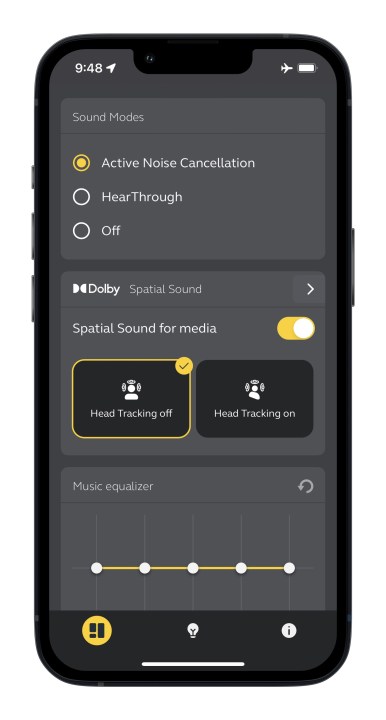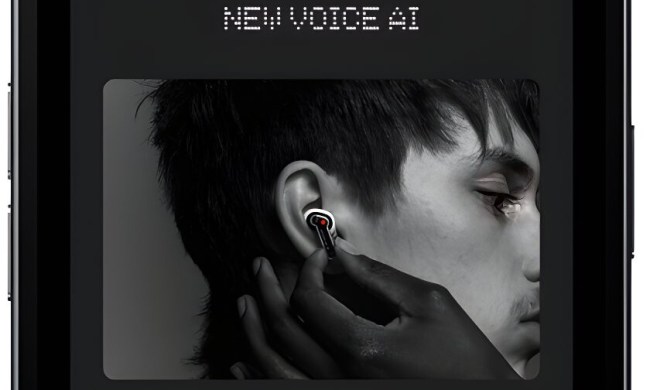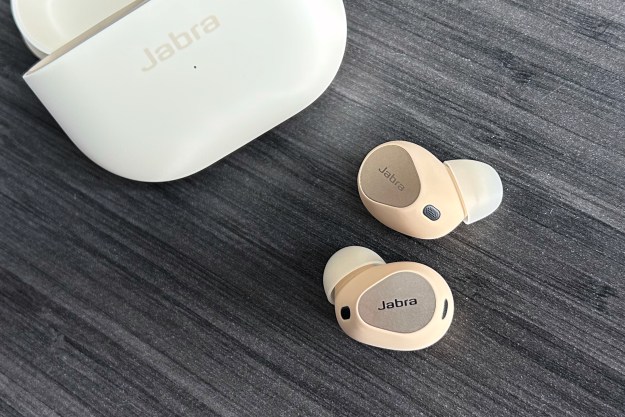
- Very comfortable
- Excellent sound quality
- Great controls
- Fully waterproof and dustproof
- Bluetooth Multipoint
- Mediocre call quality
- Spatial audio doesn't wow
- No Amazon Alexa option
Jabra’s latest flagship wireless earbuds, the Elite 10, have massive shoes to fill. They’re the official successor to the Elite 7 Pro, a feature-rich product that nailed the sweet spot of price versus performance.
This makes Jabra’s approach to the Elite 10 something of a gamble. Instead of doubling down on the 7 Pro’s success by improving its performance further, the Elite 10 seem to draw more inspiration from Jabra’s Elite 85t, an older, more expensive, model that emphasized comfort and sound quality. To this formula the Elite 10 adds Dolby Atmos spatial audio with head-tracking and has set the price accordingly at $249. That makes them Jabra’s most expensive buds to date, and the same price as Apple’s AirPods Pro, the Elite 10’s nearest competitor.
Has Jabra’s gamble paid off? Let’s check them out.
Jabra Elite 10: design
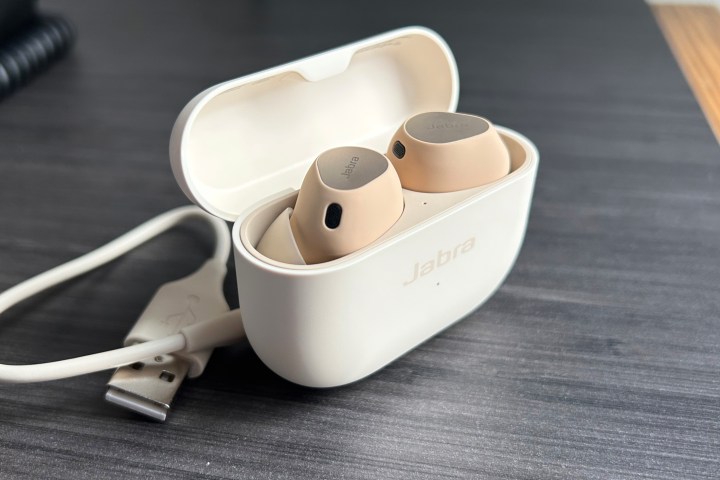
There will be no mistaking the Elite 10 for any other Jabra model. They’re bigger, with a vaguely egg-like shape, more contoured on their undersides, and entirely wrapped in a velvety soft silicone that feels a lot like the ShakeGrip skin Jabra used on the Elite 7 Active. The Elite 10 keep the distinct teardrop multifunction button Jabra has used on all of its recent models, though it’s now a little bigger, which makes it easier to press. Jabra’s build quality is truly impressive — except for the screened microphone openings, as there are no gaps or seams anywhere. The Elite 10 also come in a variety of shades: Titanium Black, Cocoa (which looks kinda burgundy to me), Matte Black, Gloss Black, and Cream, the latter of which you can see in the photos of our review model.
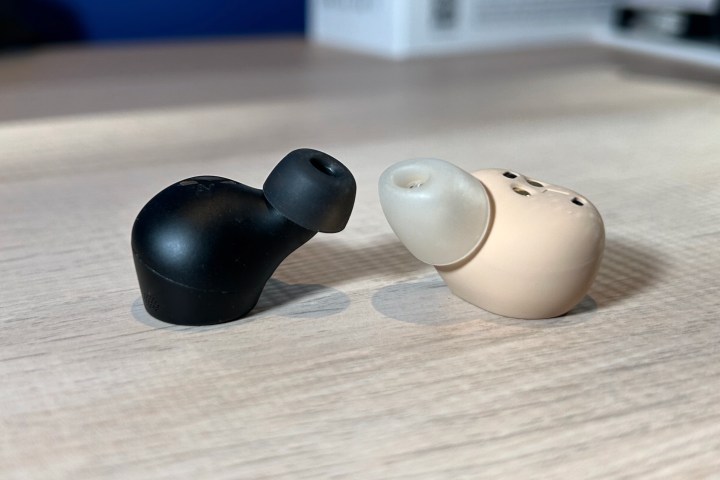
But the biggest change is the oval eartips, a design that Jabra introduced on the 2020 Elite 85t, but seemingly abandoned for all of its newer models. They’re back, but with a twist: the new design is asymmetrical, following an ergonomic shape that should create a better, more comfortable seal for most people. At a media briefing on the Elite 10 in New York City, Calum MacDougall, Jabra’s senior vice president of marketing, told me that oval eartips are simply a better match for the shape of our ear canals than round tips. That may be so, but Jabra’s continuing use of round tips for its other models suggests that it’s not quite ready to bet the company’s future on that belief.
If the Elite 10 earbuds are a hybrid of the 7 Pro and the 85t, then so is their charging case, which now resembles the case for Apple’s AirPods Pro, but is beefier. Like Apple’s case, it has gentle, rounded corners that make it a joy to hold, and you lay it flat on its back to charge, whether wirelessly using a Qi-compatible charger, or with the included USB-C cable.
Jabra has abandoned the Elite 7 Pro’s clamshell lid in favor of its original flip-top design. But thanks to a larger body-to-lid ratio, it’s even easier to open the lid one-handed.
The only (very minor) downside is that — unlike Jabra’s previous designs — the case can no longer sit upright with the lid open.
The Elite 10 are rated IP57, effectively making them waterproof and dustproof. Their case, however, has no protection from the elements, so keep that in mind.
Jabra Elite 10: comfort and controls
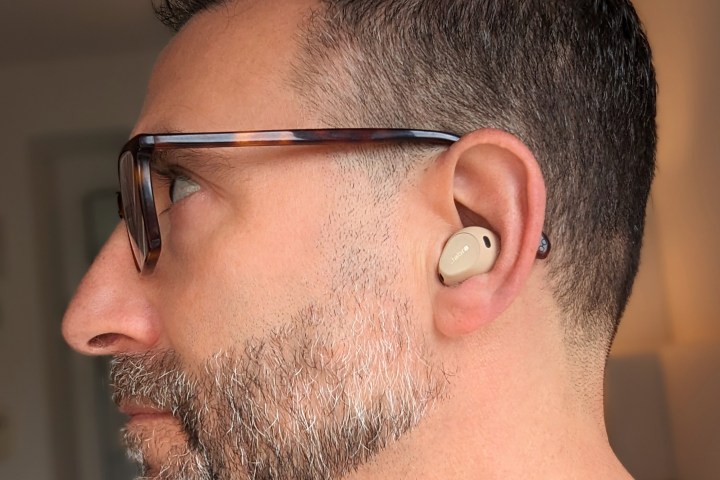
For me, the Elite 10’s new shape and oval eartips deliver when it comes to comfort. They seem to nestle into my conchas (the pocket created by the outer ear) as though they were made to order. If you’ve ever been bothered by the so-called occlusion effect (that uncomfortable feeling of having your ears blocked), the Elite 10’s vented design should help a lot. Compared to the fully sealed Elite 7 Pro, it’s a far more natural feeling, which is further helped by the Elite 10’s silky smooth exterior — it’s like a second skin, all but eliminating pressure points that can be caused by hard plastic.
In the box, you get four sizes of eartips from which to choose — that’s up from the usual three sizes that Jabra has included in the past, a good decision considering that some people will need to use different sizes in each ear. Unfortunately, Jabra has removed the Fit Test feature in the Sound+ companion app that helped guide you to the eartip size(s) offering the best fit.
As comfortable as I find them, I don’t expect everyone to agree. Despite all of their ergonomic advantages, the Elite 10 are still physically large; those with smaller ears may have trouble getting them to fit. This is compounded by the design of the eartips: Jabra has gone with a shorter tower (or horn) — the nozzle part to which the eartips are affixed — which keeps the tips from penetrating the ear canal as deeply as they do with the Elite 7 Pro.
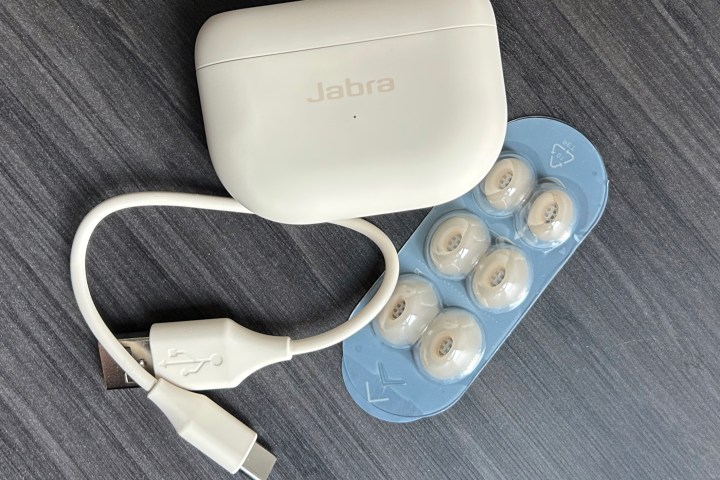
The result is not only a more challenging fit for small ears, but also a less secure fit for all ear sizes. They stayed put for me during casual use and walking, but the new Jabra Elite 8 Active will be a better choice for high-impact activities.
As far as I’m concerned, Jabra’s controls are the best, period. In an industry where touch controls have become the norm, Jabra’s steadfast use of physical buttons is admirable and the company keeps finding ways to make them better.
The Elite 10’s multifunction buttons click with surgical precision. They require very little pressure, and yet inadvertent presses rarely happen. You can use them to control every function via the default gestures or you can pick your own using the app. Best of all, if you live in a place that experiences winter, physical buttons don’t require you to remove your gloves. Jabra also enhances these controls with wear sensors that can be used to pause your tunes, or answer a call as soon as you place an earbud in your ear.
As with many of Jabra’s newer models, Spotify Tap is an option, but it comes at the cost of voice assistant access. Speaking of voice assistants, the Elite 10 has lost Amazon Alexa as an option, something that previous models gave to both Android and iOS users.
Jabra Elite 10: Bluetooth Multipoint
Getting the Elite 10 to pair with an iPhone is simple and easy. And thanks to Google Fast Pair, it’s even quicker on Android devices. Once connected, I didn’t experience any hiccups — they were rock-solid. Jabra was an early adopter of Bluetooth Multipoint, the technology that lets you stay connected to two devices simultaneously, and it continues to offer excellent, stable Multipoint connections.
I especially like the way Jabra’s earbuds go into pairing mode. There’s no need to reinsert them in the case — simply press on both buttons simultaneously for a few seconds and you’ll hear “ready to pair.”
Jabra Elite 10: noise cancellation and transparency
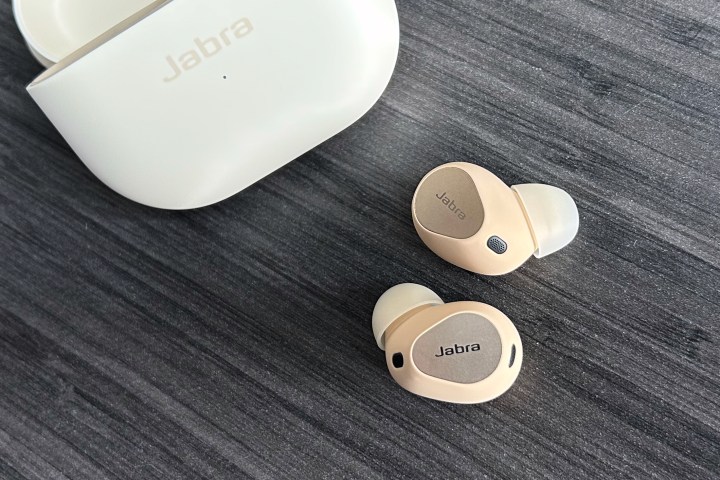
Noise cancellation is very good on the Elite 10. It reduces distracting sounds in a wide variety of conditions, but be wary of the language Jabra uses to describe it. You’ll see “up to 2x more noise cancellation with Jabra Advanced ANC” listed on the Elite 10 Amazon description, but that’s not twice as much ANC as other companies’ models or even twice as much as the Elite 7 Pro — it’s relative to Jabra’s own entry-level “standard” ANC, which you’ll find on the Elite 4.
As far as I can tell, the Elite 7 Pro are still a hair more effective at blocking out noise (wind noise too) — probably because the software doesn’t have to deal with the Elite 10’s vented design, which naturally lets more external sounds in. And since the Elite 7 Pro were never the cream of the ANC crop to begin with, that means you’ll get better results from the AirPods Pro and the Bose QuietComfort Earbuds II if absolute silence is what you seek.
It’s a similar story for transparency (or HearThrough in Jabra’s vocabulary). The Elite 10 let lots of sound in and you can tweak the amount in the app. It’s perfect for keeping tabs on possible hazards as you run or walk, and for the occasional conversation. It’s not quite as good for keeping your own voice sounding natural to you — that remains a feat that only Apple has perfected — but I love that you can choose to pause your tunes automatically when you turn it on.
Jabra Elite 10: sound quality and spatial audio
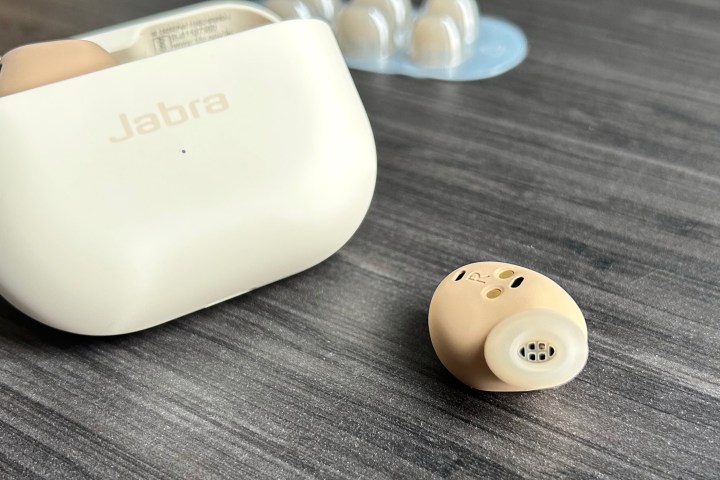
Sporting a set of new 10mm drivers, the Elite 10 are the best Jabra earbuds yet when it comes to sound quality. They produce that classic Jabra sound: full and resonant bass layered with clear and detailed mids and highs, but they do it with more authority and with a wider soundstage than both the Elite 7 Pro and the Elite 85t. It’s a sound signature that seems to be the ideal companion to any genre of music. Jabra has quietly dropped the “MySound” feature from its app, which created a personalized EQ based on your hearing profile, but since it didn’t do much for my enjoyment of the Elite 7 Pro, I’d be surprised if it’s missed.
The most notable part of the Elite 10’s listening experience is the addition of Dolby Atmos processing for spatial audio. Like the AirPods Pro, the Elite 10 also have head-tracking sensors that can be used to give spatial audio an extra layer of realism by keeping some elements (like a lead vocalist or an on-screen actor) anchored in space, while the rest of the sound moves as you move your head. Unlike the AirPods Pro, however, the Elite 10’s Dolby processing (with or without the optional head-tracking mode) is available when listening to any audio, from any source, not just audio encoded in the Dolby Atmos format. It’s the same system that LG was first to use on its T90Q wireless earbuds, but Dolby says it’s been improved for the Elite 10.
On paper, that sounds pretty good, especially for fans of the wider and deeper soundstage that spatial audio creates. The Elite 10 should be able to “spatialize” any regular, two-channel audio into 3D sound.
Unfortunately, I just wasn’t impressed by the results. It offers only the slightest alteration of the audio, coming nowhere close to what a true Dolby Atmos-formatted song or movie soundtrack can deliver.
Moreover, keeping spatial audio turned on while listening to actual Dolby Atmos makes the sound quality worse. It’s counterintuitive, but since the earbuds don’t know when you’re listening to spatial audio content or when it’s stereo, they apply the same processing to all audio. And since Dolby Atmos content has already been processed by your streaming app, the Elite 10 essentially processes it again when you’re using Jabra’s spatial audio option.
The result is a perceptible drop in midrange to high frequencies — it sounds muddier than normal Dolby Atmos. You can get most of this clarity back by using the Sound+ app’s equalizer as yet another layer of adjustment, but keep in mind that this new EQ will still be applied when you switch back out of spatial mode.
If the Elite 10’s handling of up-converted two-channel audio is a mild effect, the opposite is true of its head tracking system. I’m still not sure I like listening to head-tracked music, but if you like it, the Elite 10 can be aggressive in their anchoring of music. On some songs, like Billie Eilish’s Bad Guy, the vocals remain front and center, while the rest of the track moves with you as you turn your head. This is what you’d normally expect from head tracking. However, on Temple Of Ekur by Volbeat, the entire band stays fixed in place as though you were turning your head away from a set of speakers directly in front of you.
When it comes to Dolby Atmos Music, each track must be judged on its own merits. Some mixes really benefit from the technology, while others can sound worse. The same is true for the Elite 10’s handling of spatial audio effects.
Jabra Elite 10: call quality
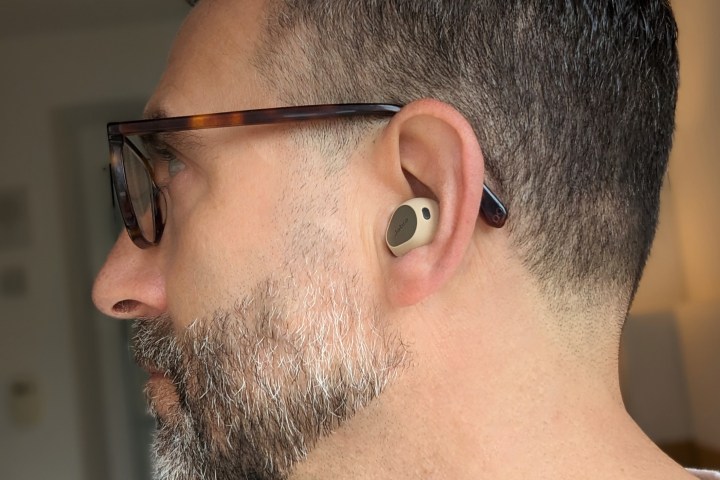
The Elite 7 Pro had exceptional call quality, whether indoors or outdoors, and even strong wind didn’t interfere with your ability to be heard by callers. The Elite 10 has just as many microphones as the Elite 7 Pro, so you’d expect them to perform similarly, but that’s not the case. While not bad for calls, the Elite 10 can’t match the 7 Pro’s overall clarity and consistency. Background sounds were still noticeable and my voice sounded compressed at times, with a significant amount of sibilance. In fact, in going back over my sample recordings for other Jabra earbuds, I can’t even say with confidence that the Elite 10 are better for calls than the $150 Elite 5.
You still get Jabra’s adjustable side-tone option to pipe in a bit of your own voice for a more natural and less tiring experience, plus the handy one-click mic muting feature, which is still a rarity on wireless earbuds. But overall, the Elite 10 aren’t going to be the best Jabras if call quality in a variety of situations matters to you.
Jabra Elite 10: battery life
Battery life on the Elite 10 is in the same neighborhood as previous Jabra models. You get a claimed eight hours with ANC off (36 hours total with the charging case), and six hours (27 total) when it’s on. To get these numbers, you’ll need to keep the volume level set to 50%. A fast charge of five minutes will extend your playtime by an hour. The Elite 7 Pro manage to get almost eight hours with ANC — I’m guessing their ANC system just doesn’t have to work as hard because of their fully closed design.
There’s a lot to like about the Jabra Elite 10. They’re very comfortable, their redesigned charging case is easier to use and carry, and they’re the best-sounding Jabra earbuds so far. Their inclusion of Dolby Atmos spatial audio may not be for everyone, but it’s a fun feature that’s worth exploring, and their physical controls are best in class. However, the Elite 10 represent a step backward in call quality, battery life, and security of fit when compared to the Elite 7 Pro, while at the same time costing $49 more. The Elite 10 still get a hearty endorsement, but they stop just shy of the incredible value Jabra delivered on its previous flagship.

